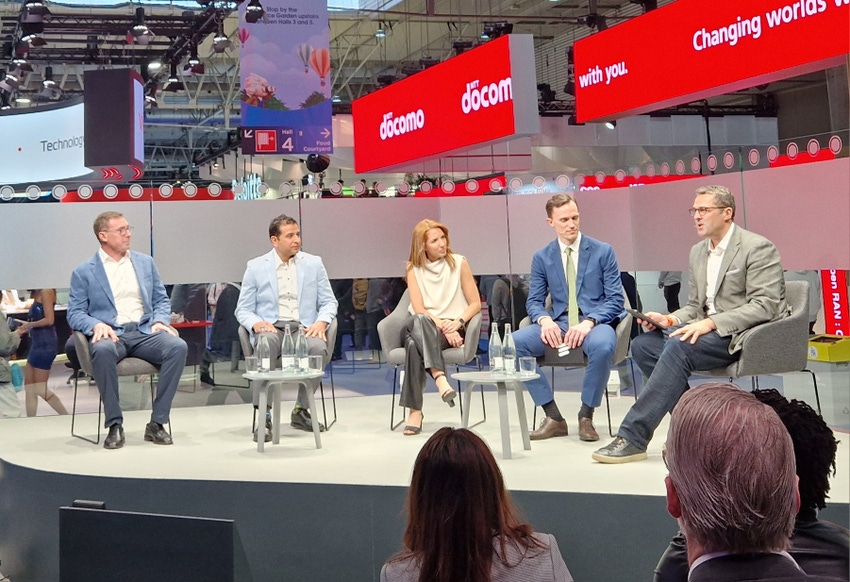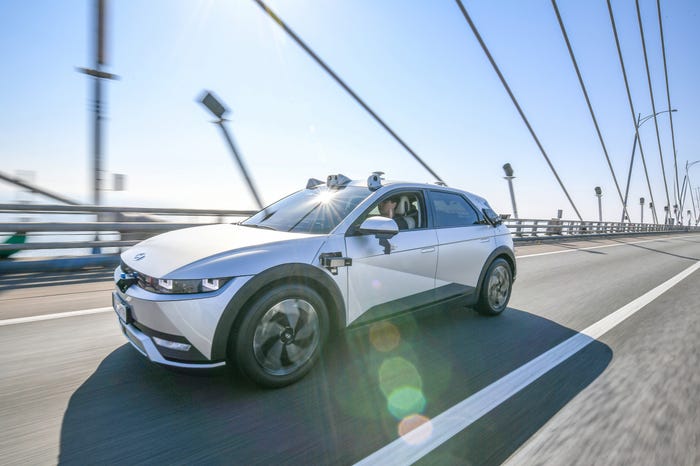Industry collaboration and skills transformation are crucial for networks to support AI applications like computer vision and generative AI

Industrial AI requires reliable, secure networks to operate. In turn, networks offer new opportunities to train and use AI, something that telecommunications operators can monetize. As well as offering new services, operators are also using AI to transform their businesses.
This was the theme discussed by an expert panel on AI-powered networks at Mobile World Congress 2024, taking place in Barcelona from Feb. 26 to 29.
According to Lilac Ilan, global head of business development for telecommunications operations, at Nvidia, AI growth is a “beautiful opportunity” for telcos to start monetizing their network.
“We just recently had a telco survey, and 90% of the responders who said that they're adopting AI reported a revenue increase of almost 10%,” she said. “The question is, what are the AI tools and solutions that drive this revenue?”
Ilan said the survey found there were four main ways operators could monetize AI. The first is applications like industrial machine vision. They are also seizing the generative AI opportunity and offering sovereign cloud services to enterprises in their market. A growing application is distributed inferencing at the edge, which requires a supporting network. The final opportunity is for networks to monetize excess capacity when a network is idle for training AI.
Jitin Bhandari, chief technology officer and vice president of the cloud and network services business group at Nokia, stepped the discussion back from generative AI to traditional AI.
“Over the last five years, we have seen real customer use cases that have been built up over the network around optimization, energy saving and cybersecurity,” he said. “You're seeing the monetization path not only empowering our service provider friends but also taking into the B2B models for industrial and enterprise use cases.”
Nokia is also moving into the generative AI space with an enhancement to its MX Industrial Edge (MXIE) service.
“These nodes and devices sit on very complex industrial flows—we’re talking about earthmovers and robotic arms – and they're doing data connectivity applications that are sitting on these nodes.” He said. “We have just launched an open-source large language model powered on these nodes, MX Workmate.”
MX Work is an operation technology (OT)-compliant generative AI solution that makes it easier for industrial workers to interact with machines conversationally.
“You can walk onto an industrial floor. It doesn't matter if you've been with this industry for five years or this is your first day. The conversational aspect is fundamental to generative AI and we are exploring that to the fullest,” Bhandari said.
Jean-Christophe Laneri, vice president and head of cognitive network solutions at Ericsson said that AI will change lives and how automation is run.
“We're at a critical point now, where you have the complexity of these networks on one hand and on the other you have the readiness, the maturity of cloud and AI technology and we could be doing something interesting,” he said.
“Ericsson has been proud of enabling the best networks around the world for many years, but we’ve realized that what got us here will not get us where we want to be a few years from now. We can automate and optimize a lot of our workflows and we're pretty excited about testing them.”
Laneri added that transformation in telcos is going to take a village. Technologies now only contribute less than 10% to business, and they are now turning to process changes, rationalization and new ways of working
Adam Loddeke, assistant vice president of radio access network (RAN) technology at AT&T, said the company has been using AI for network optimization and it could even offer a lifeline following natural disasters.
“We have used network optimization in scenarios where hurricanes have hit and you can use it to optimize how you deploy your assets,” he said.
“It can help you understand where there are outages – whether telco-related or power-related – and make sure that you optimize and deploy assets efficiently so that you can maximize the number of sites that you have on air. That’s the worst-case disaster scenario, but we also use it for dispatch optimization during regular operations.
“AI offers both a performance and an operation benefit and we focus a lot of our time on those two areas today. Longer term we’ll look at how we can take advantage of that extra compute that exists on the far edge as we move towards open RAN and turn that into some sort of monetization.”
Read more about:
Mobile World Congress 2024About the Author(s)
You May Also Like
.png?width=100&auto=webp&quality=80&disable=upscale)
.png?width=400&auto=webp&quality=80&disable=upscale)





.png?width=300&auto=webp&quality=80&disable=upscale)
